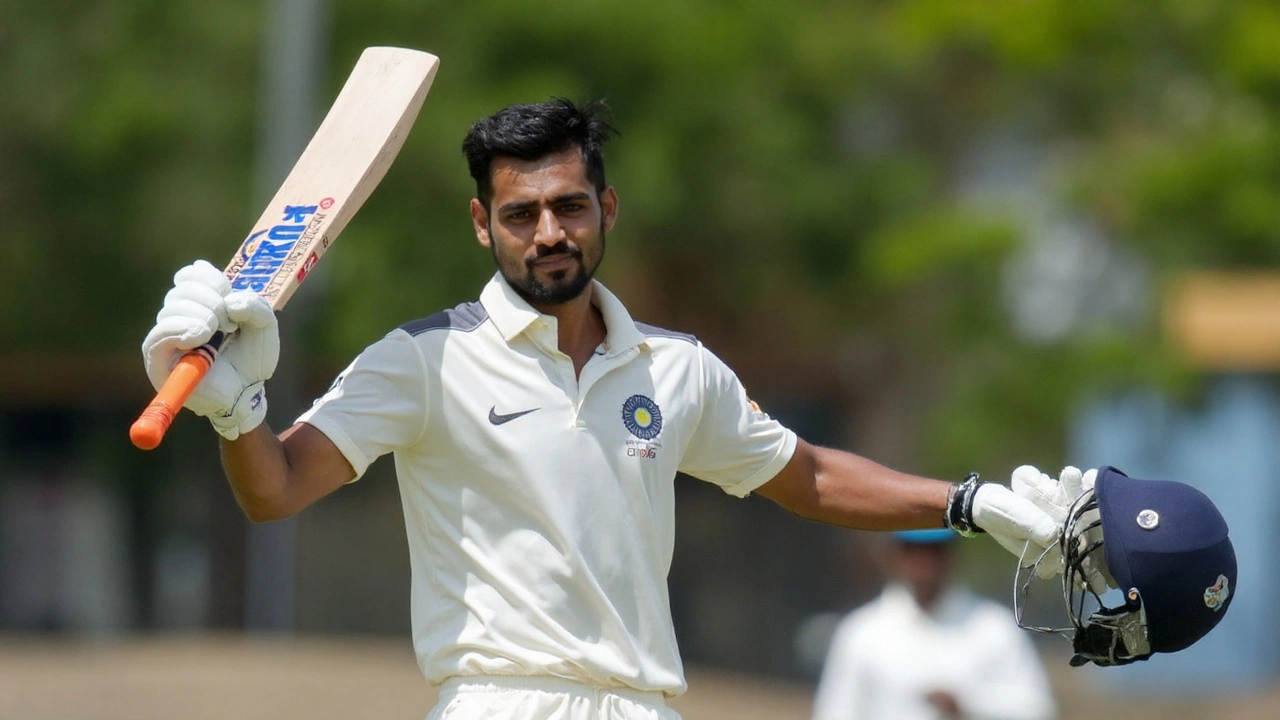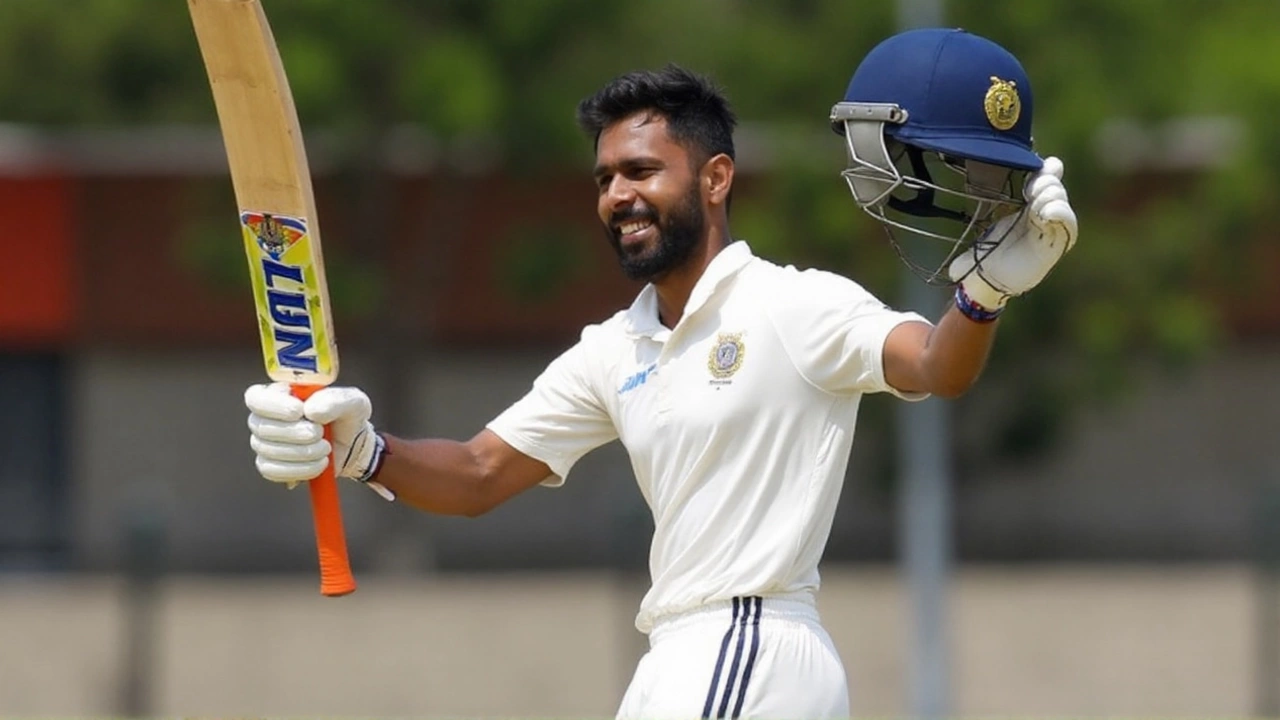
Gaikwad’s 184 steadies West Zone and restarts a career plan
When West Zone slipped to 10 for 2 in a Duleep Trophy semi-final, the silence said enough. By stumps, the story had flipped: 363 for 6, powered by a stunning 184 off 206 balls from Ruturaj Gaikwad, back in first-class cricket after an elbow fracture and months of rehab. The scorecard shows the runs; the tempo and control told the real tale.
This was not a hit-and-hope return. He walked in with the new ball doing a bit, left well, and trusted straight lines. Then, once the ball softened, he opened up. The strike-rate nudged close to a run-a-ball without the frenzy you see in white-ball games. It was old-school red-ball pacing wrapped in modern shot-making.
West Zone needed a grown-up innings after Yashasvi Jaiswal (4) and Harvik Desai (1) fell early. Gaikwad found early calm with Aarya Desai in a 90-run stand that stopped the slide. When the middle order wobbled again—Aarya Desai (39), Shreyas Iyer (25), and Shams Mulani (18) went in a clump to leave West 179 for 5—the game started to tilt. That’s where the comeback turned into a statement.
Enter Tanush Kotian. The Mumbai allrounder backed up his captain with a practical 65, and the pair stitched 148 for the sixth wicket. It was a partnership built on good sense—rotate, punish width, leave the rest. By the time Kotian fell, the innings had momentum and Central Zone were chasing it. Shardul Thakur was 24 not out when the day ended, with runs still in the bank.
The location mattered too. The BCCI Centre of Excellence ‘B’ ground can be grippy early and honest later. That shaped the method: play late, drive straight, cut only when the width is real. Gaikwad’s balance rarely broke. He played on the up when it was safe, and kept the spin quiet by going deep in the crease. You could see the rehab hours in the way he repeated his setups ball after ball.
What stayed with teammates was the calm. Even after the triple strike that left West 179 for 5, there was no rush. He took singles to re-start the innings, then cracked the bad balls with clean hands. The boundary hits weren’t forced; they came when the field spread and the bowlers missed length. Simple cricket under pressure usually looks like this.
The numbers will live in the match report—184 off 206, a pair of big partnerships—but the context is why it resonates. This was his first big red-ball outing after the elbow layoff. Through rehab, he had doubled down on first-class patterns: longer net sessions, leaving more balls, playing late, and getting comfortable batting time. Today’s control wasn’t an accident; it was built.
He kept the post-match chat real. No big talk about selections; just the line that there’s a “long road ahead” and that he wants to get the basics right. It fits his image, but it also makes sense. He has done the flashy stuff in T20s. Red-ball cricket asks for patience, hours on your feet, and the same shot played right a hundred times. That’s the lens he used all day.
From Central Zone’s view, they had moments. The first burst worked, the mini-collapse mid-session tilted the odds, and the second new ball (when it arrived) was meant to reset the day. But missed lengths to a set batter are harsh lessons. On day two, they’ll need to strike early, squeeze the tail, and keep the target under control. If West Zone sneaks past 450, the game starts to stretch.
For West, the plan is clear: stack another 70–100 runs, let the quicks hunt with a healthy cushion, and make use of the footmarks later. The surface didn’t scream demons, but it rewarded discipline. A first-innings lead is usually the currency that decides these Duleep knockouts.

What this means for selection and the bigger red-ball picture
The Duleep Trophy is a checkpoint, not a finish line. It feeds national conversations because it simulates pressure: new ball spells, uneven bounce late in the day, and the weight of regional rivalry. Performing here carries weight with selectors, especially ahead of a home season when the pecking order can shift fast.
Gaikwad has been around India colors in white-ball formats and has a first-class average north of 40 for Maharashtra. The question has always been about volume—can he stack those long knocks against the moving ball and the old ball alike? An innings like this, under stress and after injury, answers a fair bit.
There’s also the method. Against pace, he rode the bounce and drove straight. Against spin, he went back and across, cut only when the ball allowed it, and worked singles. That’s transferable to home Tests, where bowlers challenge your patience more than your ego. Today showed he can pace an innings without getting stuck or reckless.
The mental side mattered as much as the mechanics. Rehab is lonely. You watch others play, scroll scorecards, and then return to nets where you’re relearning old habits. His talk of staying in the present didn’t sound like a media line. It matched the choices he made at 10 for 2 and again at 179 for 5.
Selection noise will get louder after a knock like this, but the camp around him will try to keep the focus on repeatability—two good days, then three, then a season stacked with runs. If he turns this semi-final into a match-winning platform and backs it up in the final, the case writes itself.
For now, West Zone own the scoreboard. Central Zone need quick strikes in the first hour, because once the total drifts beyond 400, the fielding side starts chasing the game. With Thakur set and the lower order capable of punching above its weight, the morning session becomes the hinge of this semi-final.
The day belonged to the comeback man. The bat swing was free, the feet were sure, and the decisions were calm. The number—184—will headline the day. The story behind it might matter more in the weeks to come.